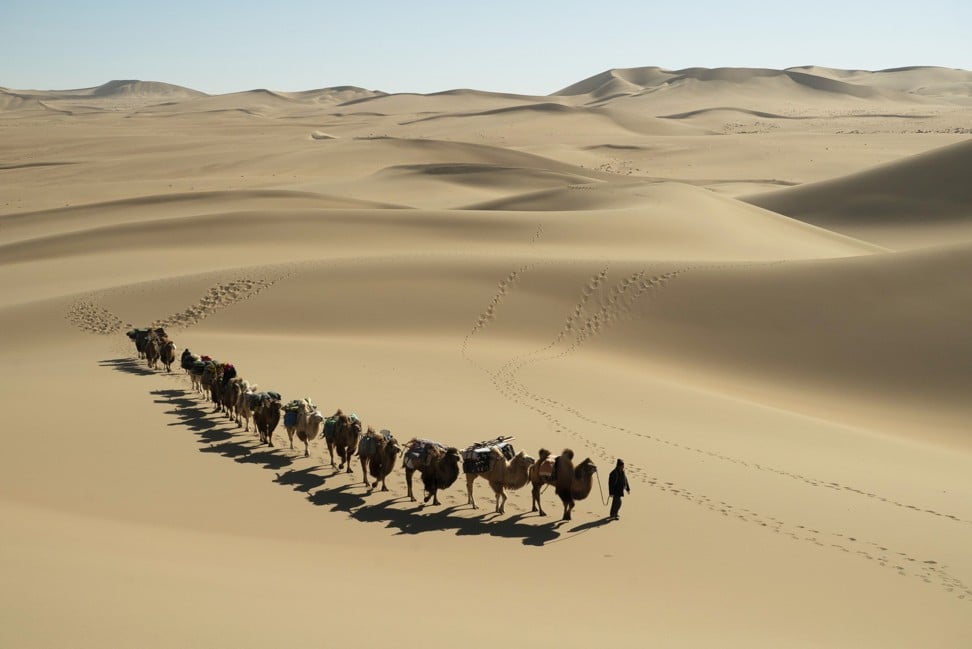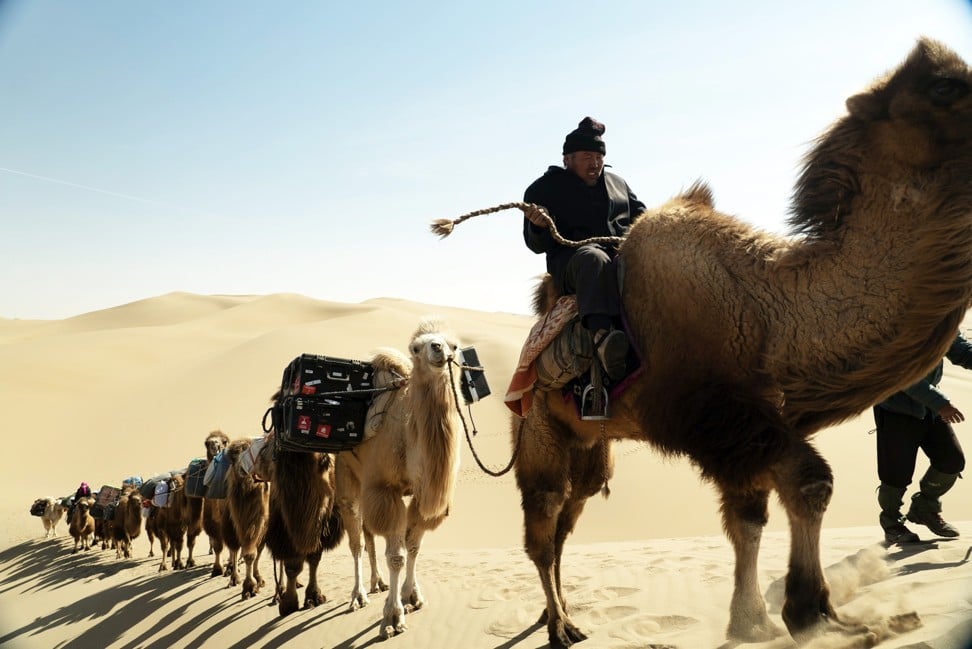
How a trek across China’s Badain Jaran desert put everything into perspective
- Traversing 170km across the beautiful but barren landscape, adventurer Ryan Pyle wonders whether he has bitten off more than he can chew
- Accompanied by 16 camels and little else, the escape from the trappings of urban existence brings with it a gentle fear but a great night’s sleep
I toss and turn in my sleeping bag. Chapped lips and a dry, swollen tongue make speaking next to impossible. Sipping cold water from my bottle helps me recalibrate. Dry crusted eyes crack open to see sand in my tent, boots in the corner and energy bar wrappers strewn nearby.
Why are my legs so sore? Which country am I in? Why am I in a tent? Why does that tent smell like wet dog? Wait, that smell is me. I haven’t showered in days. I begin to piece it together, as if I am at the scene of a crime.
I unzip the tent and a cold breeze rushes in, China’s barren Badain Jaran desert all around. I am now fully awake and remember everything. Today, like yesterday, will be ruthless.
Morning routines out in the wild are magical. In nature, I sleep so deeply that when I awake, my mind and body take a moment or two to tune in. By comparison, when I am in the city, I often struggle; too much to eat, too much to drink, not enough exercise and not enough sleep. But out among the endless rolling sand dunes of a desert, when I am filming and trekking and climbing, it’s the opposite; too much exercise, never enough food and I sleep like the dead. It’s a condition I’ve grown addicted to.

However, magical morning rituals aside, it is apparent that this time I have bitten off more than I can chew.
We are at the midway point in a 170km (105 miles) traverse across the unforgiving Badain Jaran.
One of the most visually stunning landscapes in the world, this isolated desert stretches for 49,000 sq km across Gansu, Ningxia and Inner Mongolia, in northern China, with sand dunes reaching 500 metres tall. My team and I are shooting an episode of Expedition Asia, a television series, for Discovery Channel. Adding to the challenges of actually filming out here are those that are physical and psychological.
The flight from Beijing to the remote city of Jinchang, in Gansu province, delivered a feeling of isolation that was hard to overcome; the two-hour drive from the main highway to the middle of the desert brought with it a gentle fear. In the desert, it would be all too easy to drift off course, run out of water and food, get sick and dehydrated, succumb to sun stroke, even get caught in a sandstorm.
After meeting our camel driver and his 16 animals, which are carrying all of our food, water and supplies, we headed out on foot in an attempt to cover 170 kilometres in 12 days. Now I sit in my tent unsure of what today will bring. Although desert walking is not for the faint of heart – being on the move for 10 to 12 hours a day is physically draining; having each one of your steps slip and slide in the sand is a challenge that requires a certain level of personal insanity to enjoy – the sheer beauty of our surroundings dampens the fear.
My career takes me around the world but I do miss filming in China when not doing so. I love adventure, wild and exotic places, challenges and discomfort, and I’ve found there is really no better place in the world for all of that. While other countries I film in are also exotic and beautiful in places, there is a wildness and backcountry feel that is special to certain parts of China, and Badain Jaran delivers on every level.

This desert is one of the few places in the world to which I’ve travelled where I have to stop myself many times a day, look around and think that I might have gone too far with this adventure, I might be a bit too far out in the middle of nowhere. How do I minimise the danger? Planning and preparation are essential, of course, but beyond that you have to trust your guides and believe in your team’s ability to lead you back to safety.
Back in the tent, I’ve changed my clothes and am now heading out in to the world with a coffee in hand.
The sun rising over the sand dunes is one of the most beautiful sights I have seen and feeling the rays bring warmth to the landscape is a potent reminder of the power of Mother Nature. I hope she will bestow favourable conditions upon us today, we have a long way to go.
Ryan Pyle is a Canadian adventurer, television host and author. His latest series for BBC Earth Asia, Extreme Treks 3, began on September 17. This is the second instalment of his column, The Nomad.

